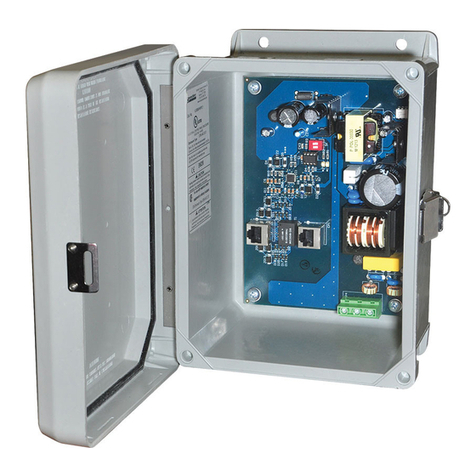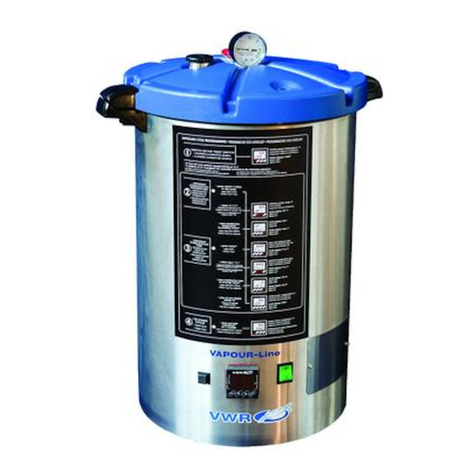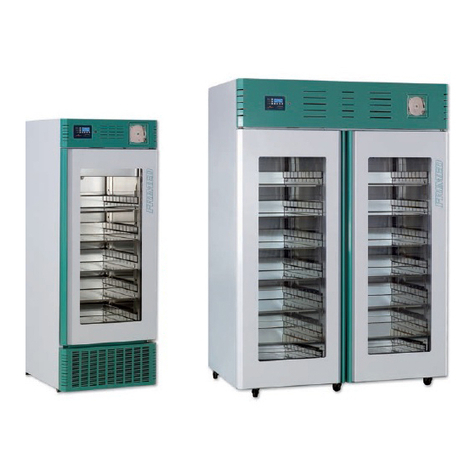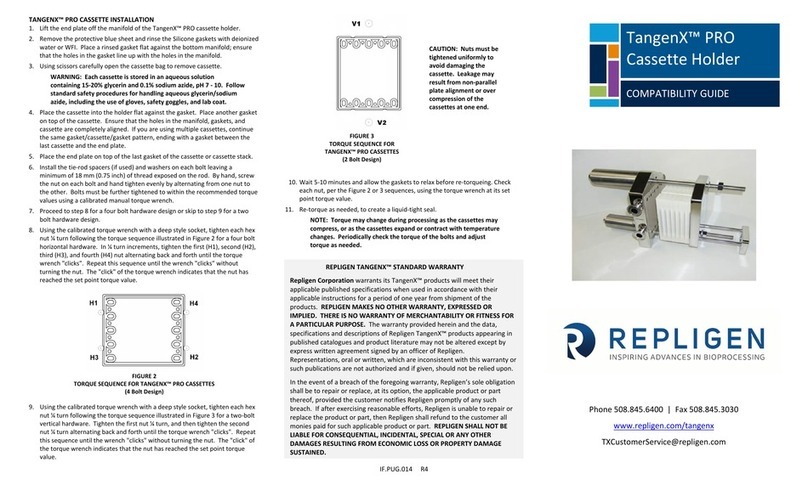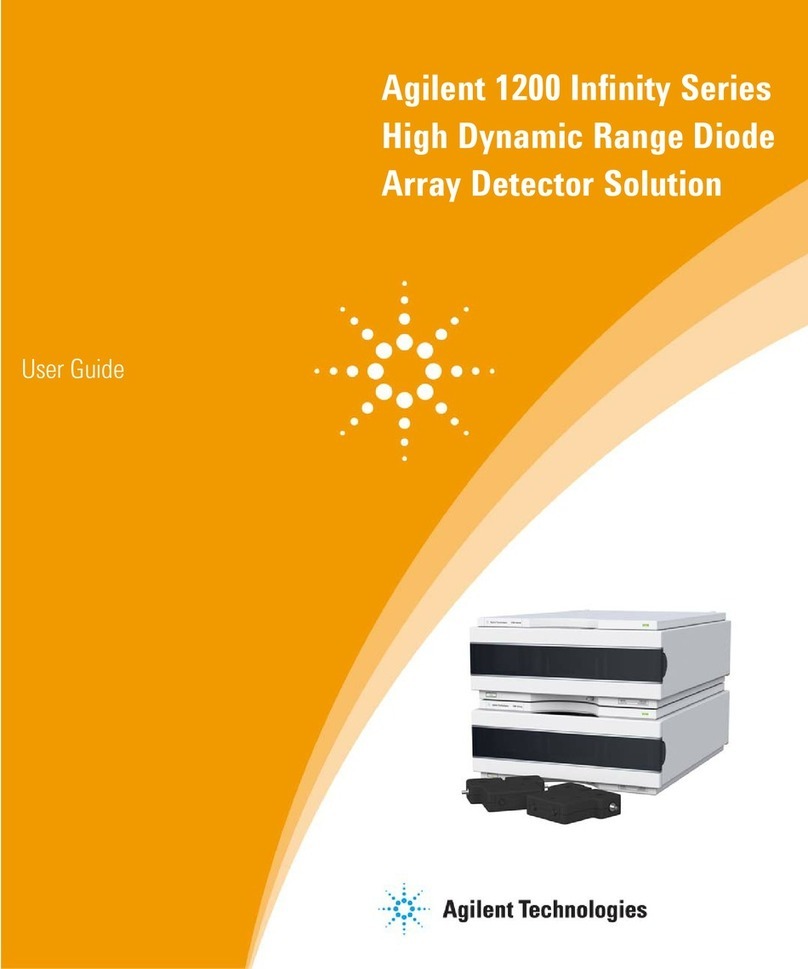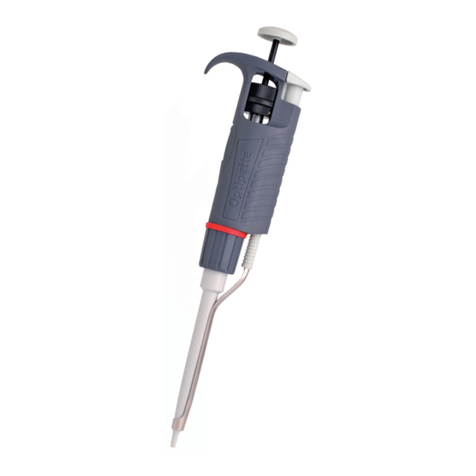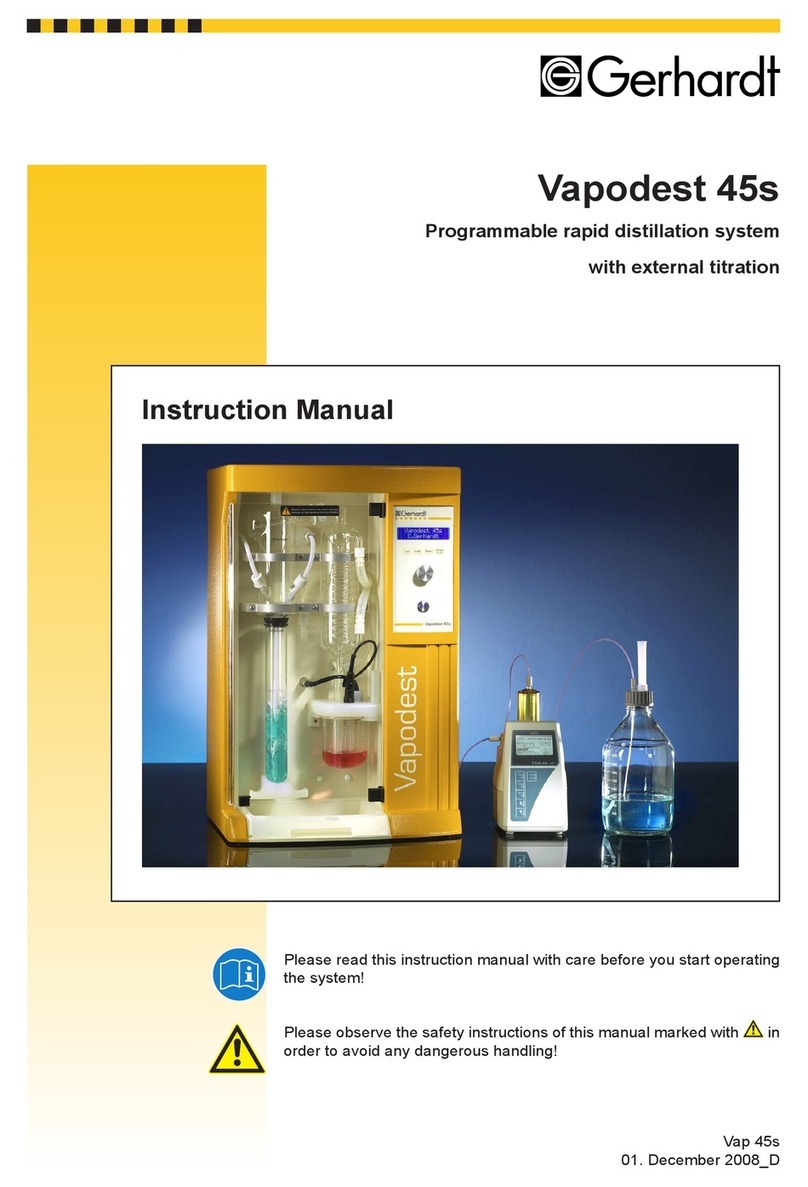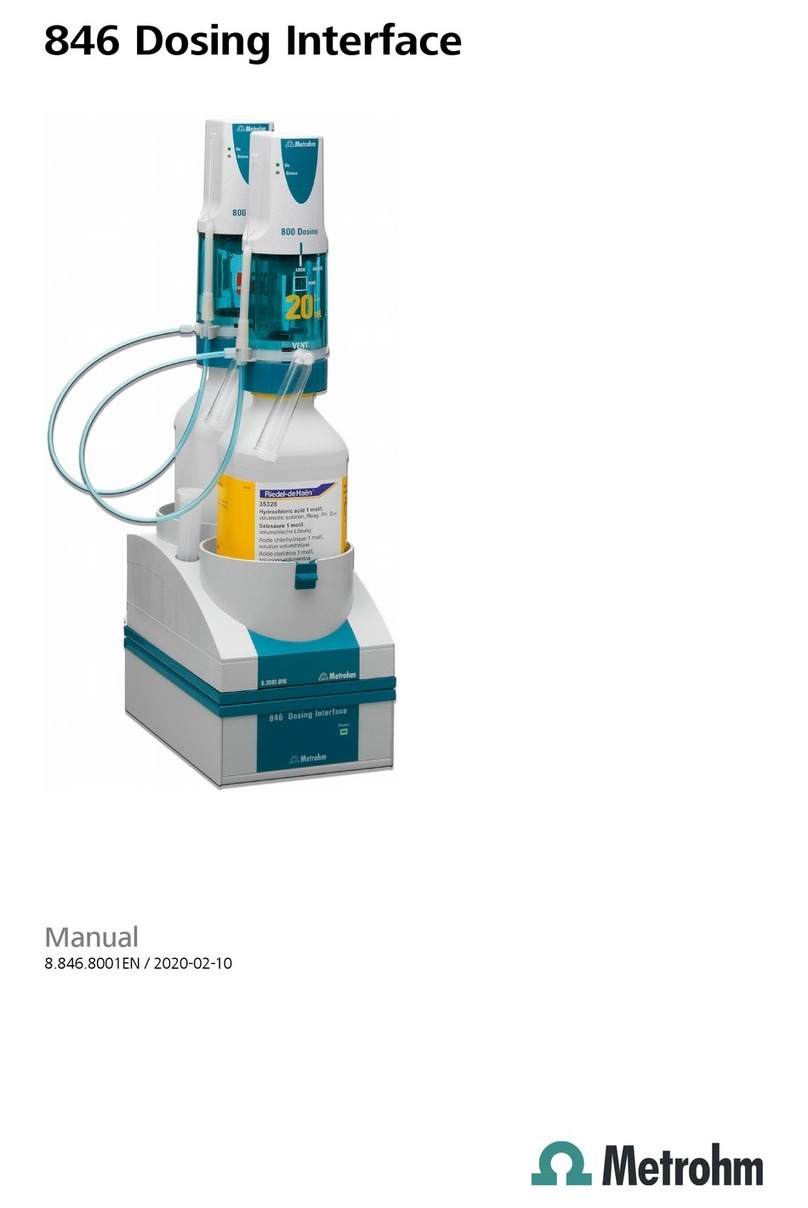Mind Peak WaveRider User manual

WaveRider
Operating Manual
www.MindPeak.com
Copyright 1997-2010 Jonathan Purcell
ll Rights Reserved
MindPeak
(formerly Wave ccess)
40 Fourth St., Ste 211
Petaluma, C 94952 US
+707-780-9520 tel
+212-918-3428 fax
www.MindPeak.com

WaveRider Operating Manual
2
Copyright 1997-2004 Jonathan Purcell
ll Rights Reserved
NOTICE:
The WaveRider is an experimental musical instrument intended for musical performance and
composition, education, and experimental computer interface applications. The WaveRider
is not intended for any type of medical use in either a diagnostic or therapeutic capacity. ny
individual or organization using the WaveRider in a medical capacity does so without the
endorsement of MindPeak/Wave ccess.

WaveRider Operating Manual
3
Copyright 1997-2004 Jonathan Purcell
ll Rights Reserved
The only means of strengthening one's intellect is to
make up one's mind about nothing --to let the mind be
a thoroughfare for all thoughts. Not a select party.
JOHN KE TS 1795-1821
bsence of occupation is not rest,
mind quite vacant is a mind distress'd.
WILLI M COWPER 1731-1800
My mind to me a kingdom is,
Such present joys therein I find,
That it excels all other bliss
That earth affords or grows by kind.
SIR EDW RD DYER 1700?-1758
From doubt to certainty is but a breath,
breath from unfaith's halting place to faith,
This precious breath then do you cherish, for
Life's sum is but a breath from birth to death
OM R KH YY M
For many days , my brain
Worked with a dim and undetermined sense
Of unknown modes of being
WILLI M WORDSWORTH 1770-1850
MOVING FORW RD
The deep parts of my life pour onward,
as if the river shores were opening out.
It seems that things are more like me now,
that I can see farther into paintings.
I feel closer to what language can't reach.
With my senses, as with birds, I climb
into the windy heaven, out of the oak,
and in the ponds broken off from the sky
my feeling sinks, as if standing on fishes.
R INER M RI RILKE 1875-1926 (trans. R. Bly)

WaveRider Operating Manual
4
Copyright 1997-2004 Jonathan Purcell
ll Rights Reserved
Table of Contents
T
BLE OF
C
ONTENTS
......................................................................................................................................... 4
THE
SIGNIFIC NCE
OF
BR INW VES
ND
CONSCIOUSNESS ........................................................... 6
HOW
TO
USE
THIS
M NU L....................................................................................................................... 7
QUICK START.................................................................................................................................................... 9
Hardware Installation ............................................................................................................................... 10
Hardware Installation otes ...................................................................................................................... 11
Software Installation .................................................................................................................................. 12
U
SING THE
W
VE
R
IDER FOR THE
F
IRST
T
IME
.................................................................................................. 12
Set up the MIDI Device .............................................................................................................................. 12
Set up the Comm Port....................................................................................Error! Bookmark not defined.
O
NE
P
GE
O
PER TION L
O
VERVIEW
............................................................................................................... 14
C
ONNECTING
B
R INW VE
E
LECTRODES
.......................................................................................................... 16
ips for Electrode Use................................................................................................................................ 18
Conditions ecessary for Good Electrode Contact.................................................................................... 18
otes on Attaching Brainwave Electrodes ................................................................................................. 19
C
H NGING
MPLIFIC TION
.............................................................................................................................. 20
C
RING
F
OR
E
LECTRODES
............................................................................................................................... 21
E
LECTRODE
P
L CEMENT
................................................................................................................................. 23
LEARIG THE HEART, GSR, BRAI AD MUSCLE MODES............................................................ 25
HE RT ........................................................................................................................................................... 26
GSR................................................................................................................................................................. 28
BR IN ............................................................................................................................................................ 29
BR IN ............................................................................................................................................................ 30
MUSCLE......................................................................................................................................................... 31
MUSCLE......................................................................................................................................................... 32
KEY COCEPTS .............................................................................................................................................. 33
KEY COCEPTS .............................................................................................................................................. 34
KEY COCEPTS .............................................................................................................................................. 35
CHAELS ....................................................................................................................................................... 36
USE
C TEGORIES........................................................................................................................................ 36
FILE
CRE TION ........................................................................................................................................... 37
Configuration Files .................................................................................................................................... 37
Archive Files............................................................................................................................................... 37
ASCII FILE OU PU (Exporting to a spreadsheet).................................................................................. 38
WINDOWS ..................................................................................................................................................... 39
Strip Chart.................................................................................................................................................. 40
Fast Bars and Slow Bars ............................................................................................................................ 42
Spectrogram ............................................................................................................................................... 44
GSR Graph ................................................................................................................................................. 46
MIDI................................................................................................................................................................ 48
FFTS,
DIGIT L
FILTERS
ND
SIGN L
PROCESSING............................................................................ 51
MIDGAMES: WA ERIDER LESSO PLAS......................................................................................... 53
I
NTRODUCTION
................................................................................................................................................ 54
T
HE
B
ODY
:
GSR,
H
E RT
&
M
USCLE
.............................................................................................................. 56
GSR............................................................................................................................................................. 56
PLAYIG WI H HE HEAR RA E......................................................................................................... 62

WaveRider Operating Manual
5
Copyright 1997-2004 Jonathan Purcell
ll Rights Reserved
MUSCLE .................................................................................................................................................... 67
MUSCLE .................................................................................................................................................... 67
REL X ........................................................................................................................................................... 72
PER CE ALPHA .................................................................................................................................... 73
PER CE HI-ALPHA............................................................................................................................... 77
ALPHA AMPLI UDE ................................................................................................................................ 81
GSR / % ALPHA......................................................................................................................................... 85
LPH /THET ............................................................................................................................................. 89
ALPHA/ HE A WI H 2 OES ............................................................................................................... 89
ALPHA/ HE A FOR 2 CHAELS.......................................................................................................... 93
FOCUS............................................................................................................................................................ 96
BE A/ HE A ............................................................................................................................................. 97
SMR/ HE A............................................................................................................................................ 101
SMR/ HE A FOR 2 CHAELS ............................................................................................................ 109
BE A/ HE A FOR 2 CHAELS........................................................................................................... 111
SSESSMENT ............................................................................................................................................. 113
BRAI REFLEC OR ............................................................................................................................... 113
CHECKER................................................................................................................................................ 115
JUST
FOR
FUN ............................................................................................................................................ 117
BLUES ESEMBLE................................................................................................................................. 117
PROGRAMMIG WA EWARE ................................................................................................................. 120
THE
GENER L
GR PHICS
ND
THE
MIDI
OPTIONS
DI LOG
BOXES ............................................ 121
MIDI OP IOS DIALOG BOX ............................................................................................................... 124
GEERAL GRAPHICS OP IOS DIALOG BOX................................................................................... 126
POWER I PASSBAD ........................................................................................................................... 129
RA IO OF POWER I PASSBAD......................................................................................................... 131
DIGI AL FIL ER ................................................................................................................................... 133
RA IO OF WO FIL ERS....................................................................................................................... 135
REWARD/SUPPRESS RA IO .................................................................................................................. 137
REWARD/SUPPRESS .............................................................................................................................. 139
DOMIA FREQUECY...................................................................................................................... 141
COHERECE .......................................................................................................................................... 143
HEAR RA E........................................................................................................................................... 145
GSR .......................................................................................................................................................... 147
PEAK O PEAK AMPLI UDE................................................................................................................ 149
EUROSCIECE: THE GEERATIO OF BRAIWA ES .................................................................. 151
HE AU OOMIC ERVOUS SYS EM ................................................................................................ 151
HE BRAI .............................................................................................................................................. 152
BRAIWAVE GEERA IO................................................................................................................... 154
APPEDICES.................................................................................................................................................. 155
WH T
IS
DDE
ND
THE
DDE
SDK?........................................................................................................ 155
MINDPE K
LIMITED
W RR NTY
ST TEMENT ................................................................................ 156
W VE CCESS
SOFTW RE
LICENSE
GREEMENT ........................................................................... 157

WaveRider Operating Manual
6
Copyright 1997-2004 Jonathan Purcell
ll Rights Reserved
THE SIGNIFICANCE OF BRAINWAVES AND CONSCIOUSNESS
What is observed as consciousness is the interaction of many complex biological systems.
These systems can be viewed from a variety of vantage points. There are biochemical,
anatomical, psychological, and electrophysiological explanations of the workings of the
mind.
Brainwave states are another perspective on the mind, albeit an imperfect one. They reflect a
small portion of the activity of the brain, and only on a very gross level. The events observed
as brainwaves are epi-phenomena of more fundamental processes. They contain though,
important information about one’s mental state. Brainwave rhythms reflect primarily the
working of the thalamus and limbic system. Brainwave states correlate with mental states of
concentration, relaxed attentiveness, and deep relaxation.
By observing sensations while producing specific brainwave states, one can learn to produce
those states more effectively. By consistently practicing the production of specific brainwave
states while observing one’s state of mind, one can develop the ability to consciously produce
specific mental states in real life situations. Stress, relaxation, concentration, free association
of thought, and the ability to stay ‘connected’ with another person, can be modified by the
conscious production of specific brainwave states.
Our will alone can change our state of mind.

WaveRider Operating Manual
7
Copyright 1997-2004 Jonathan Purcell
ll Rights Reserved
HOW TO USE THIS MANUAL
The information in this manual is arranged in order of importance for a new user. Early
sections cover more general topics. Later sections cover more in-depth topics.
ll users should completely understand the QUICK ST RT Section. Quick Start covers
installation of hardware and software, use and care of electrodes, and a brief operational
overview. Of particular importance is the section on attaching and troubleshooting electrode
contact, as this represents the number one issue of new users.
LE RNING THE HE RT,GSR, BR IN ND MUSCLE MODES is directed at individuals
with no experience in using biological data acquisition equipment.
KEY CONCEPTS provides a useful overview of the functions of WaveWare Software.
MINDG MES is a set of lesson plans. Each lesson corresponds to a configuration file
installed with WaveWare.
PROGR MMING W VEW RE describes how to program each of the MIDI Options and
General Graphics Options dialog boxes in WaveWare. This information is necessary to alter
existing configuration files and to author new ones.
NEUROSCIENCE is an extremely brief overview of the physiology of brainwave generation.

WaveRider Operating Manual
8
Copyright 1997-2004 Jonathan Purcell
ll Rights Reserved

WaveRider Operating Manual
9
Copyright 1997-2004 Jonathan Purcell
ll Rights Reserved
QUICK START

WaveRider Operating Manual
10
Copyright 1997-2004 Jonathan Purcell
ll Rights Reserved
Ha dwa e Installation
WaveRider Pro
WaveRider jr./2CX
Install a Battery
Install a fresh 9-Volt battery (not included) in the battery compartment.
Connect Serial Cable
The WaveRider includes a 9-pin male to female serial cable.
1. Connect the female end of the serial cable to a serial port on the back of the computer.
The serial port on the computer has a male connector. If your computer does not have a
serial port see “Using a USB to Serial Port Converter” below.
2. Connect the male end of the serial cable to the connector on the back of the
WaveRider.

WaveRider Operating Manual
11
Copyright 1997-2004 Jonathan Purcell
ll Rights Reserved
Ha dwa e Installation Notes
Batteries
E ER connect theWaveRider to C power lines using a voltage converter. This could
compromise the safety of the user.
Disposable Batteries
Recommended batteries include high quality 9-volt alkaline and lithium cells.
Rechargeable Batteries
Recommended batteries include 9-volt Nickel Metal Hydride (NiMH) cells. Nickel
Cadmium (NiCad) are not recommended. Some people have used 12 volt gel cell motorcycle
batteries that sit outside the case of the WaveRider and can be recharged periodically with a
car battery type charger.
USB to Serial Port Connector
WaveRider comes with a USB to Serial Port Converter cable
The comm port used by WaveWare and the comm port used by the USB to serial port
converter driver must match. WareWave can only connect to comm ports 1, 2, 3, or 4. The
USB to serial port converter can be assigned to a wider range of comm ports but will only
work if assigned to ports 1,2,3, or 4. For detailed instructions see Setup USB To Serial Port
Converter Cable, below.

WaveRider Operating Manual
12
Copyright 1997-2004 Jonathan Purcell
ll Rights Reserved
Softwa e Installation
1. Exit all applications.
2. Insert the WaveWare CD.
3. Run setup.exe.
4. Follow the directions on the screen for installation.
5. When installation is complete drag the WaveWare icon onto your desktop.
Using the WaveRider for the First Time
1. Launch the WaveWare application.
2. WaveWare will prompt you to select a MIDI Device.
3. Select a MIDI Device according to the directions below.
4. Install the USB to Serial Cable according to the directions below.
5. Turn the WaveRider on by clicking the WaveWare ‘on’ button with your mouse or by
typing ‘ctrl’ + ‘o’ on your keyboard.
6. WaveWare will prompt you to select a comm (serial) port.
7. Select a comm port according to the directions below.
The comm port is properly installed when the red light on the WaveRider comes on and stays
on, and when the ‘on’ button in WaveWare is checked.
Set up the MIDI Device
The first time you launch the WaveWare application after installation you will be prompted
to select a MIDI device.
S UNDBLASTER TYPE DRIVER (Most Common)
If you have a SoundBlaster or a SoundBlaster compatible sound card, you will be presented
with the following choices (or some variation):
MIDI Mapper
Microsoft synth
MIDI-OUT
SoundBlaster Connected to Speakers (Most Common)
If you are using your WaveRider with a SoundBlaster connected to a pair of speakers, choose
Microsoft synth or any other synth type device listed (but not MIDI-out or MIDI-mapper).
SoundBlaster (or MIDI card) Connected to External Synthesizer
If you are using an external synthesizer connected to your sound-card or MIDI-card you will
need to select either MIDI OUT or MIDI M PPER.
This type of sound card allows you to send MIDI data to either the internal synthesizer (in the
sound card) or to an external synthesizer, (but not both simultaneously).
MPU-401 TYPE DRIVER
If your sound card uses an MPU-401 type driver, it will send data to the internal synthesizer
and to the MIDI outs simultaneously.
The preceding instructions assume that your sound-card is properly installed for Windows. If
your sound card is not properly installed, contact your sound card manufacturer to obtain the
appropriate drivers and advice.

WaveRider Operating Manual
13
Copyright 1997-2004 Jonathan Purcell
ll Rights Reserved
SETUP USB TO SERIAL PORT CONVERTER CABLE
INSTALL DRIVER, C NNECT CABLE, C NNECT WAVERIDER
1. Run Setup.exe and follow installation instructions. (From CD).
2. Run the file CDM.exe (USB to Serial Comm Port Cable Driver). (From CD).
3. Connect the USB to Serial Comm Port Cable.
4. Install a fresh battery in the WaveRider and connect the WaveRider to the USB to Serial
Comm Port Cable.
SELECT C RRECT C MM P RT IN WAVEWARE AND USB T SERIAL P RT DRIVER
The serial (comm) port specified by WaveWare (WaveRider Software) and the serial port specified
by the USB to Serial Port Cable Driver must match.
Comm port setting must be 1 through 4 and must be the same for both WaveWare and the USB to
Serial Port cable.
Every computer is different.
Some comm ports may already be in use.
You may need to try several comm port assignments until you find one that works.
Windows may indicate that a comm port is in use when it is not, or is not in use when it is.
Click the ‘on’ box in WaveWare to turn the WaveRider on. If the settings are correct the ‘on’ box will
remain checked, the red light on the WaveRider will come on and remain on, and the software will run
without error messages.
SELECT C MM P RT IN WAVEWARE (WAVERIDER SOFTWARE)
1. From the ‘ ptions’ Menu in WaveWare, select ‘Change Comm Port’.
2. Choose the appropriate Comm Port Setting.
SELECT C MM P RT F R USB T SERIAL P RT DRIVER (WINDOWS VISTA)
1. Select ‘System’ from the Control Panel.
2. Select ‘Device Manager’ from Tasks.
3. If necessary provide permission to continue.
4. Expand ‘Ports’.
5. Right click on ‘USB to Serial Comm Port (Comm x)’ and choose ‘properties’.
6. Select the ‘Port Settings’ tab.
7. Select the ‘Advanced’ Button.
8. Choose the appropriate comm port setting.
SELECT C MM P RT F R USB T SERIAL P RT DRIVER (WINDOWS XP)
1. From the control panel select ‘system’.
2. Choose the ‘hardware’ tab.
3. Select ‘Device Manager’ button.
4. Expand ‘Ports’.
5. Right click on ‘Prolific USB to Serial Comm Port (Comm x)’ and choose ‘properties’.
6. Select the ‘Port Settings’ tab.
7.
Select the ‘ dvanced’ Button.
8.
Choose the appropriate comm port setting

WaveRider Operating Manual
14
Copyright 1997-2004 Jonathan Purcell
ll Rights Reserved
ne Page perational verview
Double clicking on any window brings up that window’s dialog box.
Biological channels are & B (WaveRider jr./2CX), and , B, C, & D (WaveRider Pro).
To raise and lower the gain (amplification) on a specific channel use the arrow keys on the
keyboard when a strip chart (brain, muscle or heart) for that channel has the input focus. The
active window is the window with the input focus (the active window has a title bar of a
different color).
Do not try to play with biological signals (especially brainwaves) unless you are sure that you
have a good connection and a solid reliable signal.
LO D CONFIGUR TION in the FILE menu allows you to select a new configuration file.
S VE CONFIGUR TION in the FILE menu saves the setup that you have on your screen.
If you give the configuration the name ‘waveware.cfg’ it will become the default
configuration that is loaded when WaveWare is launched.
NEW RCHIVE in the FILE menu allows you to save biological data.
OPEN RCHIVE in the FILE menu allows you to replay stored biological data.
The use categories of configuration and archive files must match.
Ctrl + O Turns the WaveRider on and off.
Ctrl + F Freezes and unfreezes the display.
Ctrl + R Starts recording in record mode.
F1 Starts help
F3 Mutes the sound
F4 Unmutes the sound
Low Battery Is indicated by the outside of the battery slider becoming red.

WaveRider Operating Manual
15
Copyright 1997-2004 Jonathan Purcell
ll Rights Reserved

WaveRider Operating Manual
16
Copyright 1997-2004 Jonathan Purcell
ll Rights Reserved
Connecting B ainwave Elect odes
Put a small amount of skin preparation gel (NuPrep) on a finger.
Rub the skin preparation gel into the earlobes and the electrode site(s) on the head.
The skin preparation abrades the top dead layer of the skin making for lower skin impedance
and a better connection.
Wipe off any excess skin preparation with a tissue.

WaveRider Operating Manual
17
Copyright 1997-2004 Jonathan Purcell
ll Rights Reserved
Put a dab of conductive paste (Ten20) in each head electrode and in each cup of both ear
electrodes.
ttach an earclip to each earlobe. Make sure that each ear clip makes good contact with its’
ear lobe. You may need to gently re-bend the ear clips if they become bent, or no longer fully
close.
Use your fingers to move hair out of the way of the head electrode site. Place the head
electrode firmly on the electrode site making sure that the rim of the electrde sits flat on the
head with a minimum of hair beneath it. To achieve the best connection you may need to
rotate the electrode between your thumb and forefinger while keeping the rim of the electrode
flat on the head. Place the electrode wires so that they are not pulled during the session.

WaveRider Operating Manual
18
Copyright 1997-2004 Jonathan Purcell
ll Rights Reserved
Tips fo Elect ode Use
• If you adjust the electrodes, wait for the signal to settle.
• Don't play with the wires while using the WaveRider.
• poor connection may get better if the electrodes remains on the head for a few
minutes
• good electrode connection may go bad.
If this happens try the following approaches listed in order of increasing effort:
1. adjusting the electrode and ear clips and waiting for the signal to settle,
2. wiping the paste off and re-applying the electrode and ear clips,
3. wiping the paste off with a warm wet washcloth, cleaning the electrodes and
starting over.
Conditions Necessa y fo Good Elect ode Contact
Before collecting brainwaves make sure:
• The signal indicates a good quality connection. (See below).
• Electrodes were thoroughly cleaned with hot water and cotton swabs immediately
after previous use.
• Skin is clean and free of dirt, sweat, oils, and cosmetics.
• Electrode site and ears are prepped with NU-Prep and/or alcohol.
• The head and ear electrodes are filled with paste and well adhered to the sensor site.
• The rim of the electrode is flat on the head.
• The electrode lead wire plug is fully seated in the WaveRider jack.
•
ll hair is moved out of the way of the electrodes.
• The lead wires are not tangled.

WaveRider Operating Manual
19
Copyright 1997-2004 Jonathan Purcell
ll Rights Reserved
Notes on Attaching B ainwave Elect odes
ttaching electrodes is more of an art than a science. It is not unusual for new users of
electrodes to have difficulty establishing a good brainwave electrode contact.
Electrode contact is extremely important. If electrodes do not make a good contact the
WaveRider will display random environmental noise rather than electrophysiological data. If
signals resembling brainwaves are displayed that appear identical whether or not the
electrodes are attached to the body, this indicates a poor connection.
bad signal may be caused by a poor electrode connection and/or improper leadwire
placement. Electrode contact and leadwire placement are the most important aspects of noise
cancellation.
Sources of poor electrode contact include:
• Poorly attached electrodes,
• High skin impedance (due to skin that is oily, dirty or that has a lot of dead skin cells),
• Dirty or oxidized electrodes. (See below for information on cleaning electrodes).
Sources of improper leadwire placement include:
• Long lead wires,
• Lead wires being moved,
• Lead wires that pass by a source of electrical noise such as a computer monitor.
How to Determine Electrode Contact Quality
Whether a good signal has been achieved is determined by viewing the strip chart of the
channel to which the electrodes are attached. Poor electrode contact can result in the strip
chart displaying two different conditions. In the first condition the signal displays
insufficient amplitude ( i.e. vertical movement) under appropriate amplification (usually
range 7 for brainwaves). The signal should typically occupy at least 30% of the vertical
height of the strip chart window under appropriate amplification. In the second condition a
signal with substantial amplitude is displayed, but the signal displays environmental noise
rather than a biological signal. The environmental noise will usually be interference from 50
or 60 hertz power lines, but can also be caused other electronic devices such as computer
monitors.

WaveRider Operating Manual
20
Copyright 1997-2004 Jonathan Purcell
ll Rights Reserved
Insufficient amplitude:
Environmental noise:
Good signal:
Changing Amplification
The WaveRider has user selectable hardware amplification. Each range of amplification is
numbered 1 thru seven in order of increasing amplification. The amplification is changed by
raising and lowering the up and down arrow keys on the keyboard when a strip chart window
has the input focus. The active window is the window with the input focus.
If the amplification is too high, the signal will crash into the top and bottom rails of the
amplifier. This will saturate the amplifier and will cause large parts of the signal to not truly
reflect the biological signal being observed.
There is a notch filter that blocks out the power distribution frequency. In countries that use
60 hertz power this is a 60 hertz filter. In countries that use 50 hertz power this is a 50 hertz
filter. There is a conversion kit available for individuals who operate between countries with
different power distribution frequencies. Since Japan uses both 50 & 60 hertz a special
version is available that filters out both 50 & 60 hertz.
Popular Laboratory Equipment manuals by other brands
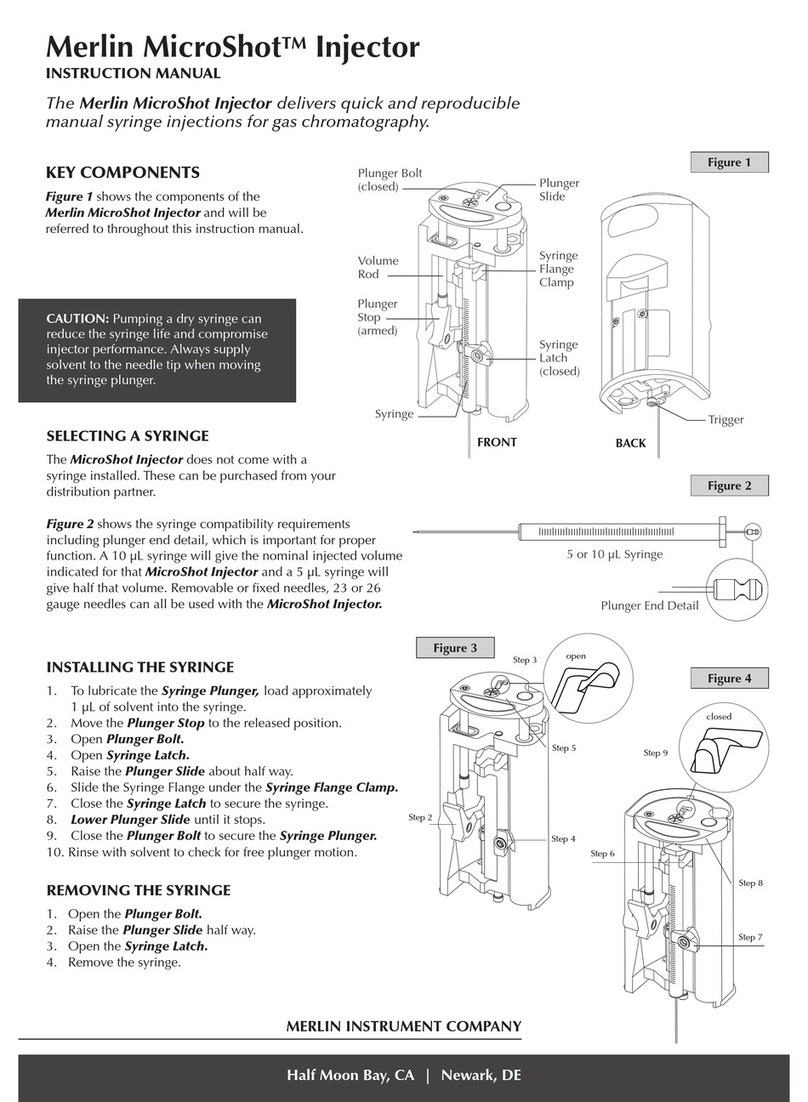
Merlin Instrument Company
Merlin Instrument Company Merlin MicroShot instruction manual
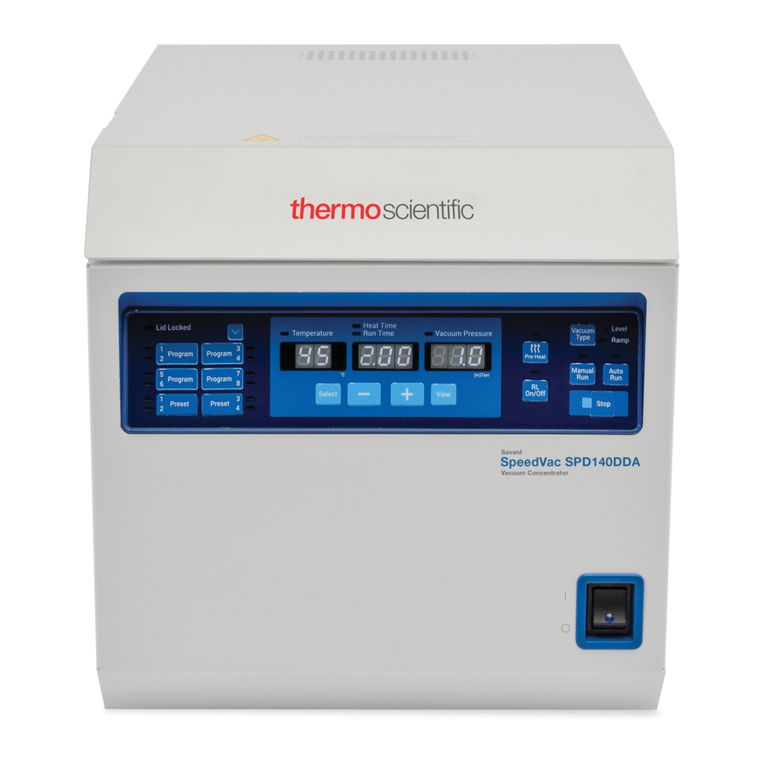
Thermo Scientific
Thermo Scientific Savant SpeedVac SPD140DDA Installation and operation

MELAG
MELAG Vacuklav 41 B Plus Evolution Technical manual
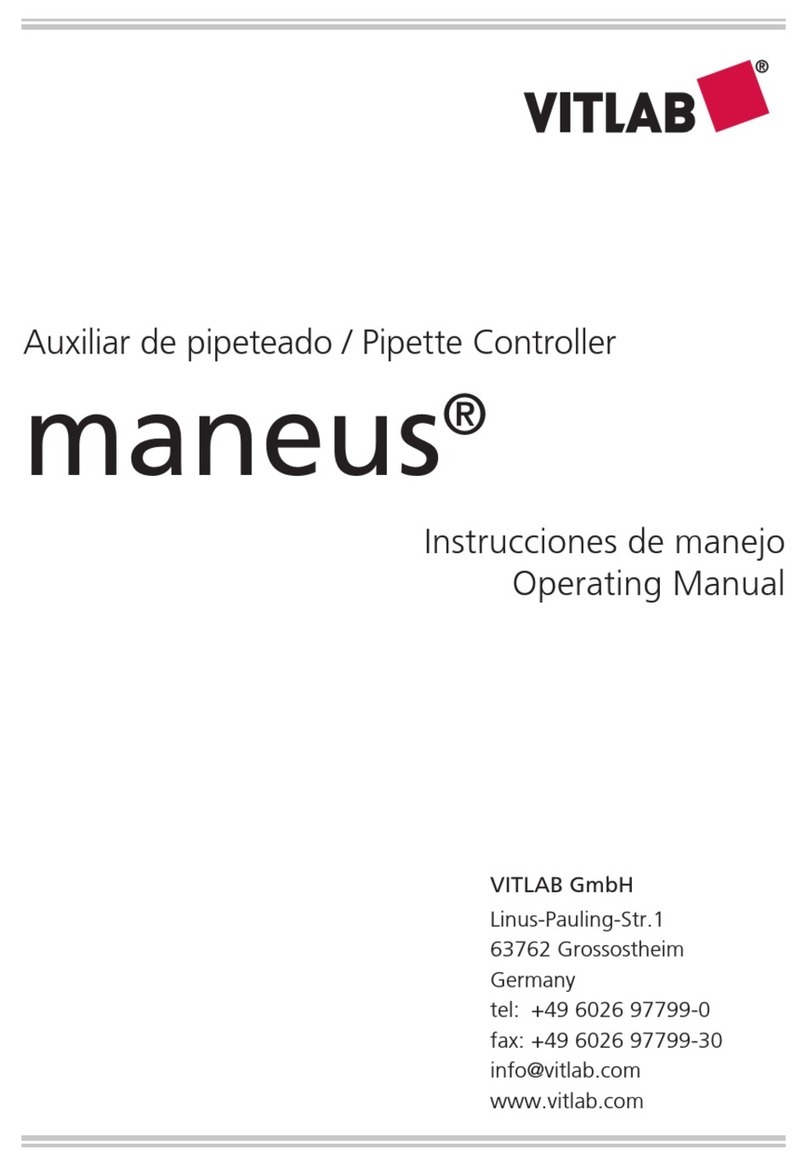
Vitlab
Vitlab maneus operating manual

Tektronix
Tektronix Keithley 2380-500-30 Performance Verification Manual
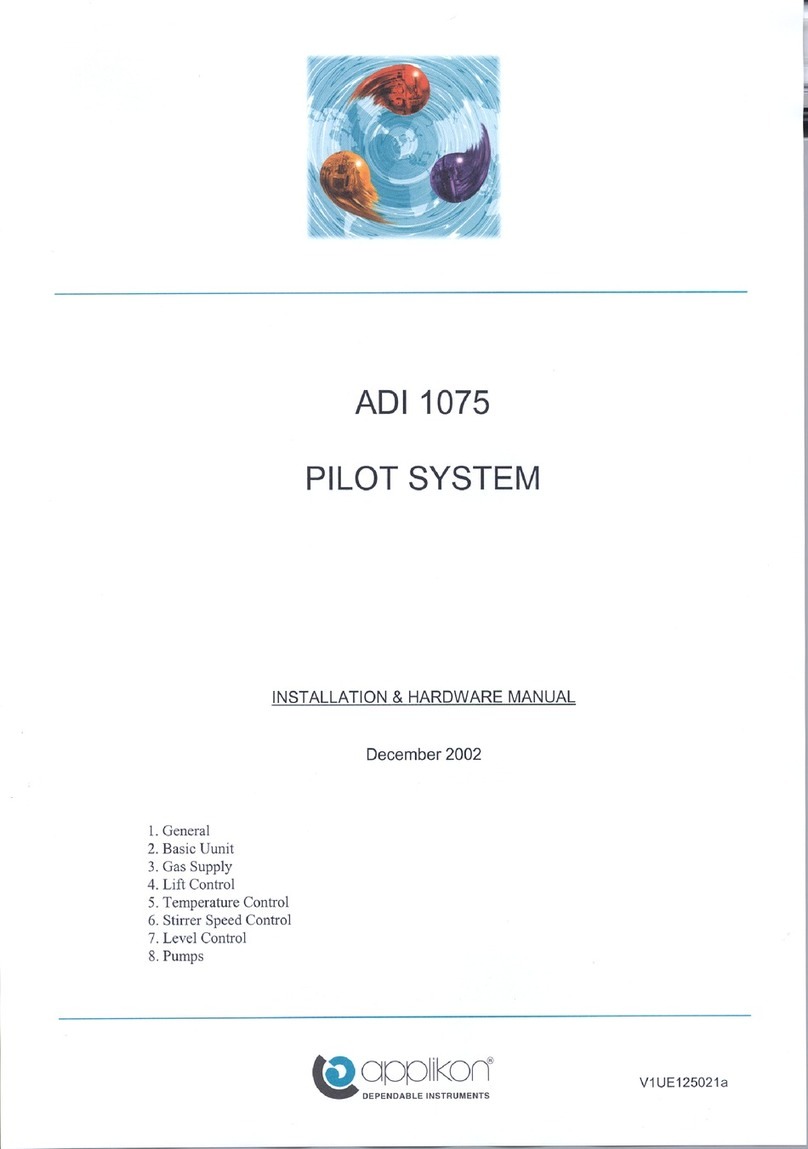
Applikon
Applikon ADI 1075 Installation/Hardware Manual
